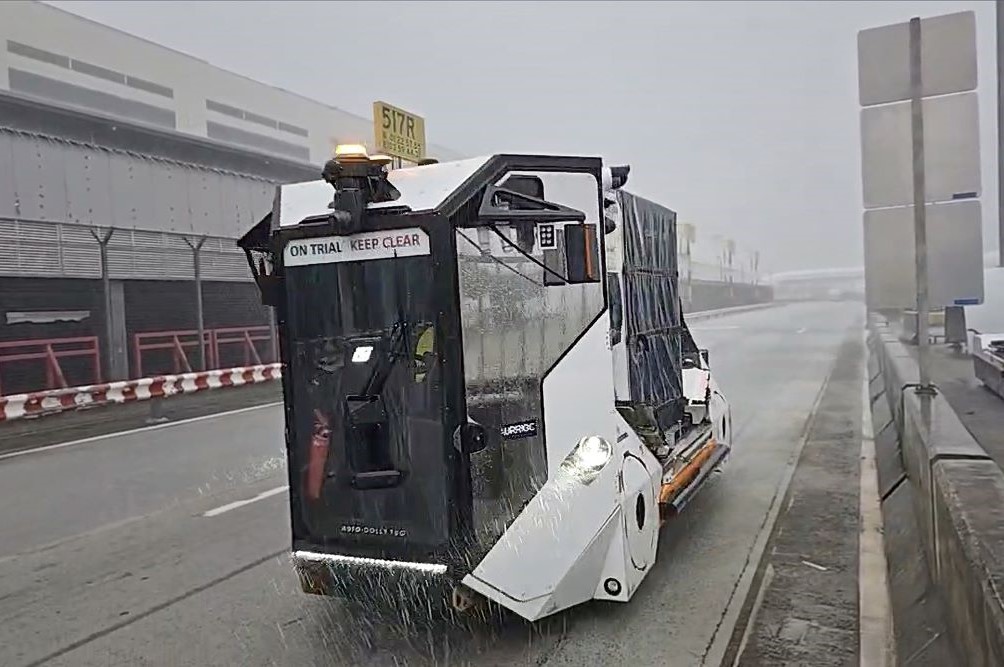Aurrigo develops rain algorithm for Auto-DollyTug
 Aurrigo International has developed software so its Auto-DollyTug can operate in heavy rain and snow conditions.
Aurrigo International has developed software so its Auto-DollyTug can operate in heavy rain and snow conditions.
The newly-developed algorithm will help it detect the difference between drops of rain and objects whilst operating in up to 50mm of precipitation per hour.
Combined with new housing to better protect LiDAR sensors, the software means the Auto-DollyTug can move baggage and cargo around airports in intense conditions.
It has been tested in scheduled simulated rain and opportunistic heavy rain, both proved by observations and rain meter readings.
Simon Brewerton, Chief Technical Officer of Aurrigo International, said: “AVs using this technology rely on the reflection feedback of laser beams for localisation and object recognition and, in intense weather, the scattering and absorption of laser beams by raindrops can lead to distorted signals, compromising the vehicle’s ability to accurately perceive its surroundings.”
The two key features of the software are filtering the rain into five spatial zones around the vehicle with the strength of filtering varying on proximity.
The second feature adjusted the field height settings and ‘near field’ low profiles were added due to the differences in scan properties between unfiltered and filtered scans, which made it challenging to detect low-lying obstacles and reflective surfaces.
Sam Layton, Regional VP Singapore at Aurrigo International said that the Auto-DollyTug could operate autonomously with no ghost or intermittent stops, react to a box or person cross its path and safely navigate a T-junction with oncoming traffic.
Layton said: “All of this had to be achieved under 15mm of rainfall per the customer’s requirement, which we successfully passed. Since then, we have increased our capabilities and operated airside on live trials with rainfall of 50mm per hour. This is a real game-changing moment for autonomous vehicles and aviation.”
Manual operations must cease during a CAT5 lightning risk due to the electrocution risk to humans, which happens frequently in places like Singapore due to the rainforest climate and inclement weather.
The development creates the potential to build a fully autonomous turnaround for operations in the worst weather conditions.
Layton said: “Our enhancement, together with other advanced systems, mean flight schedules will be maintained whilst reducing risk of injury to airside workers, two key priorities for airlines, and airport and ground support operators.”

